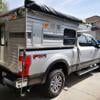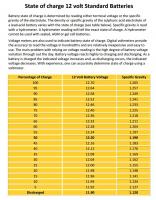I've been through the calculators and read through lots of threads both on here and on Expedition Portal and would like to get some advice.
I have a 2002 Grandby with dual flooded group 31 batteries. Lights have all been converted over to LED, just put in an Isotherm 65 fridge. There will also be times that the furnace will run and eventually I will probably add a fantastic fan.
Typically I will move the vehicle every couple of days and can charge from the alternator but am thinking I'd like to add solar for those non-typical times. I know that 200W is probably overkill but that what I am looking at since at some point I could see wanting to charge a laptop or something else.
Now the big question, why the huge variance in prices? solarblvd is $460 for a 200W system and windynation is only $325, both with PWM controllers. It seems like someone else was around $460 with an MPPT controller but I left that information at work :-(. All of these are monocrystalline panels, is one vendor that much better than another? Should I just shop price?
Hopefully someone can help a solar novice out.


















